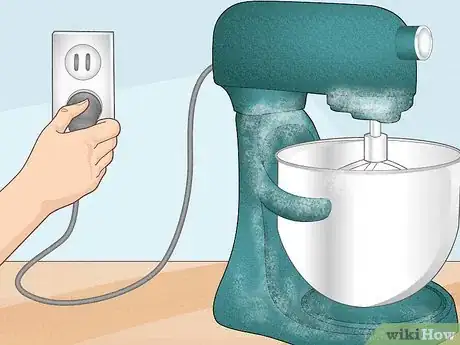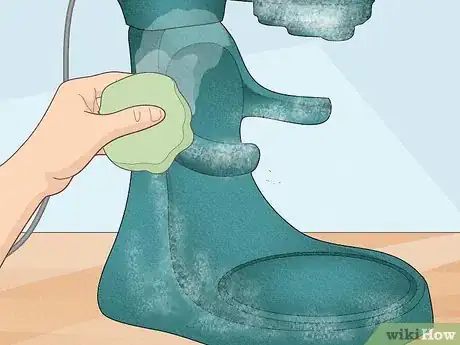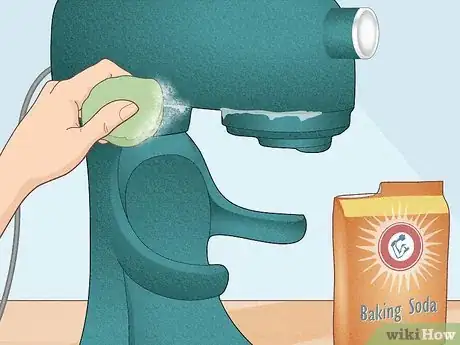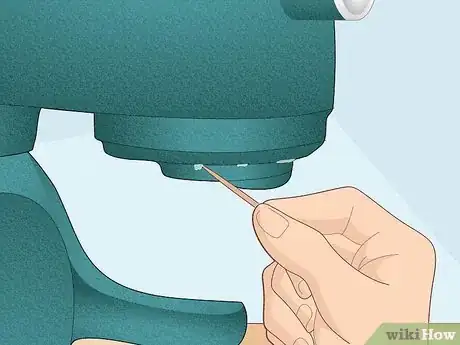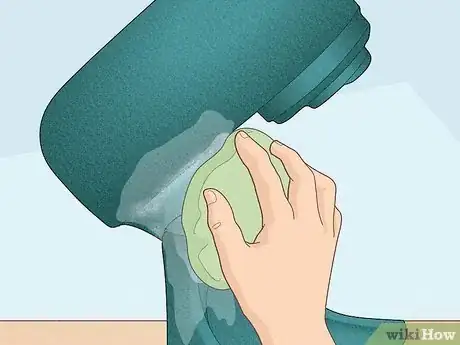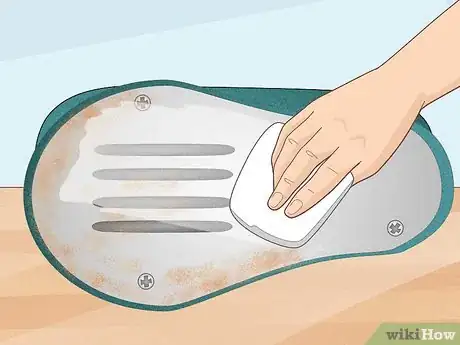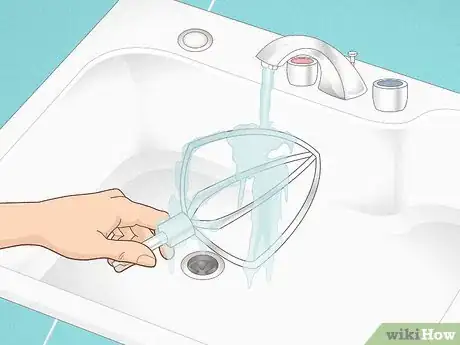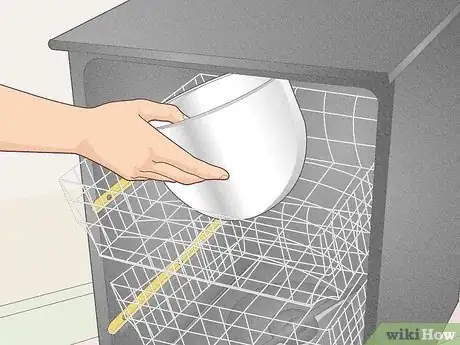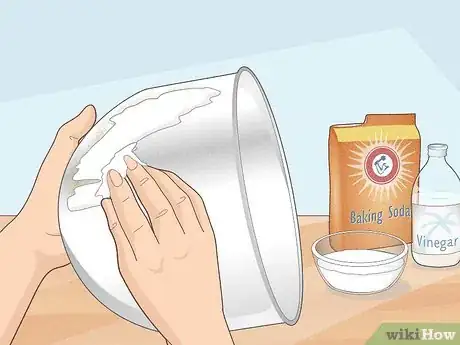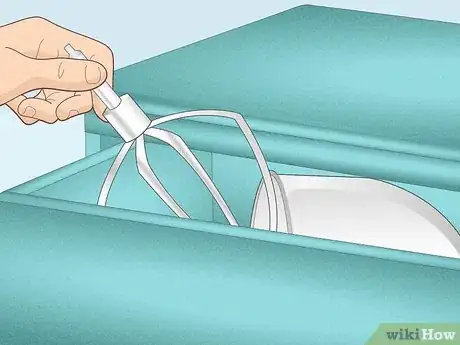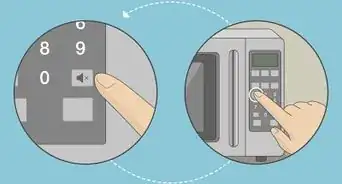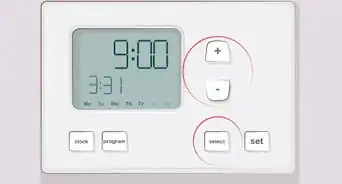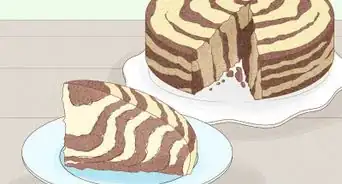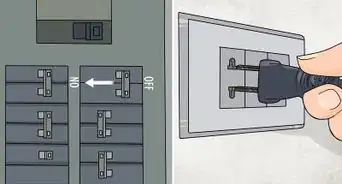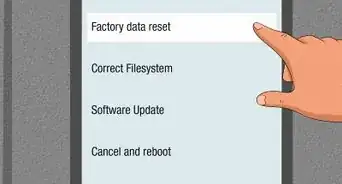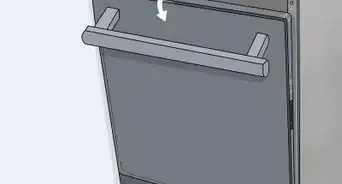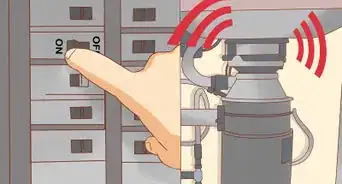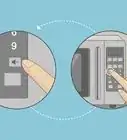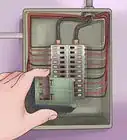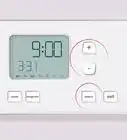This article was co-authored by wikiHow staff writer, Jennifer Mueller, JD. Jennifer Mueller is a wikiHow Content Creator. She specializes in reviewing, fact-checking, and evaluating wikiHow's content to ensure thoroughness and accuracy. Jennifer holds a JD from Indiana University Maurer School of Law in 2006.
There are 7 references cited in this article, which can be found at the bottom of the page.
This article has been viewed 9,325 times.
Learn more...
If you bake frequently, your stand mixer probably sees a lot of action. A KitchenAid mixer is quite an investment, but with proper cleaning, it will last a lifetime. Cleaning your stand mixer is less of a chore if you take a few minutes to wipe it down after every use. But even if you haven't yet developed that habit, it doesn't take a lot of effort to remove the built-up grime and get your mixer looking like new.[1]
Steps
Stand Mixer
-
1Unplug your stand mixer before cleaning it or removing the beaters. Always unplug your stand mixer after every use and before cleaning. Touching the beaters while the mixer is still plugged in could cause injury.[2]
- Getting water in the appliance while it's plugged in could cause sparks or even electrocution. Make sure it's always unplugged, even if it's turned off.
-
2Wipe down the stand with a damp cloth after every use. Use a microfiber or other soft cloth that won't damage your mixer's finish. Moisten the cloth in warm water—no soap necessary—and wring it out so that it's merely damp, not dripping. Wipe all surfaces of the stand, even if there's no visible dust or debris. Dust and oils can accumulate over time.[3]
- Never use abrasive cleaners or scouring pads, as they can damage your mixer's finish. [4]
Advertisement -
3Dab baking soda on stains or marks that won't wipe off. Tap a small amount of baking soda on your damp cloth, then gently dab at the stain or mark. If the stain is stubborn, cover it in baking soda and leave it for 5-10 minutes, then come back and wipe the baking soda off.[5]
- After using baking soda, go over the area again with a moist cloth to remove any residue from your mixer.
-
4Loosen material in the crevices with a dry toothbrush or toothpick. While you can use fancier bottle brushes to get into the nooks and crannies of your mixer, an old toothbrush or toothpick will work just fine. Brush or pick gently to get the material out of the crevice, then wipe it away with a damp cloth.[6]
- Make sure your brush or toothpick stays dry. Moistened crumbs or debris are harder to get out.
-
5Tilt the mixer's head back to clean underneath it. Wipe a moist cloth into the shaft where your beaters or hooks attach. Use a dry toothbrush or bottle brush to get up in places that are harder to reach with the cloth.[7]
- Dry the underside of the head thoroughly before you tilt it back down and lock it into place.
-
6Lay the mixer on its side to clean the base. Mixing debris can get under the base of your mixer, which you can clean off with a damp cloth. Use a toothbrush or toothpick to get any debris out of screws and other small crevices in the base.[8]
- If it's been a while since you cleaned the base of your mixer, use baking soda to get rid of any tougher stains or sediment. Dry the base before you stand your mixer back up.
Attachments
-
1Wash beaters and hooks by hand in warm, soapy water. Unless you have stainless steel beaters, wash them by hand. Putting aluminum beaters in the dishwasher causes them to oxidize and you'll get a black residue on your hands and potentially in your food.[9]
- KitchenAid transitioned to all dishwasher-safe beaters in 2018 for easier cleanup. If you bought your mixer or our beaters after 2018, all you have to do is place them in the dishwasher.
- If you have older burnished beaters, dry them immediately after cleaning them. Allowing them to soak or drip dry can also cause the aluminum to oxidize.
-
2Clean the mixing bowl in the dishwasher after every use. All mixing bowls are safe to wash in the dishwasher on either the top or bottom rack. Rinse it off before putting it in the dishwasher, especially if you don't plan to run the dishwasher immediately.[10]
- If you need to use the mixing bowl more than once, you can also wash it by hand with soap and warm water.
-
3Mix a baking soda and vinegar paste to remove stains or rust. If your mixing bowl or beaters happen to get stained or rusty, put some baking soda in a small container and dribble vinegar into it. Keep mixing until you get a paste-like consistency, then rub it on the stains or rust you want to get rid of.[11]
- The baking soda and vinegar paste will usually do the trick in about 10 minutes. If the rust or stain has been there for a while and won't come off, you might need to let the paste sit on it for several hours. Rinse thoroughly to remove any residue.
- Don't scrub stains or rust—that will only make them worse.
-
4Store your mixer attachments after cleaning and drying them. If you leave your attachments out, they'll gather dust and oils. Put them away in a cupboard or drawer after each use to keep them clean.[12]
- If you're short on cupboard space, you can also store them in the mixing bowl of your mixer. Line the bowl with a kitchen towel first to protect it from scratches and dust.
Warnings
Things You'll Need
- Microfiber or other soft cloth
- Toothbrush or toothpick
- Baking soda
- Vinegar
- Mild dish soap
References
- ↑ https://www.southernliving.com/kitchen-assistant/how-to-clean-stand-mixer
- ↑ https://www.manualslib.com/manual/88136/Kitchenaid-Commercial-Mixer.html?page=15
- ↑ https://www.thekitchn.com/how-to-clean-a-stand-mixer-229232
- ↑ https://www.manualslib.com/manual/88136/Kitchenaid-Commercial-Mixer.html?page=15
- ↑ https://www.southernliving.com/kitchen-assistant/how-to-clean-stand-mixer
- ↑ https://www.southernliving.com/kitchen-assistant/how-to-clean-stand-mixer
- ↑ https://www.southernliving.com/kitchen-assistant/how-to-clean-stand-mixer
- ↑ https://www.southernliving.com/kitchen-assistant/how-to-clean-stand-mixer
- ↑ https://producthelp.kitchenaid.com/Countertop_Appliances/Stand_Mixers/Bowl_Lift_Mixer/Cleaning_and_Maintenance/Beater_Care
- ↑ https://www.southernliving.com/kitchen-assistant/how-to-clean-stand-mixer
- ↑ https://producthelp.kitchenaid.com/Countertop_Appliances/Stand_Mixers/Tilt_Head_Mixer/Bowl_Concerns/Bowl_Oxidization_-_Stand_Mixer
- ↑ https://www.thekitchn.com/5-clever-ways-to-store-your-stand-mixer-attachments-food-processor-blades-228962
- ↑ https://www.thekitchn.com/how-to-clean-a-stand-mixer-229232
- ↑ https://www.thekitchn.com/how-to-clean-a-stand-mixer-229232
- ↑ https://www.thekitchn.com/how-to-clean-a-stand-mixer-229232
- ↑ https://www.manualslib.com/manual/88136/Kitchenaid-Commercial-Mixer.html?page=15#manual
